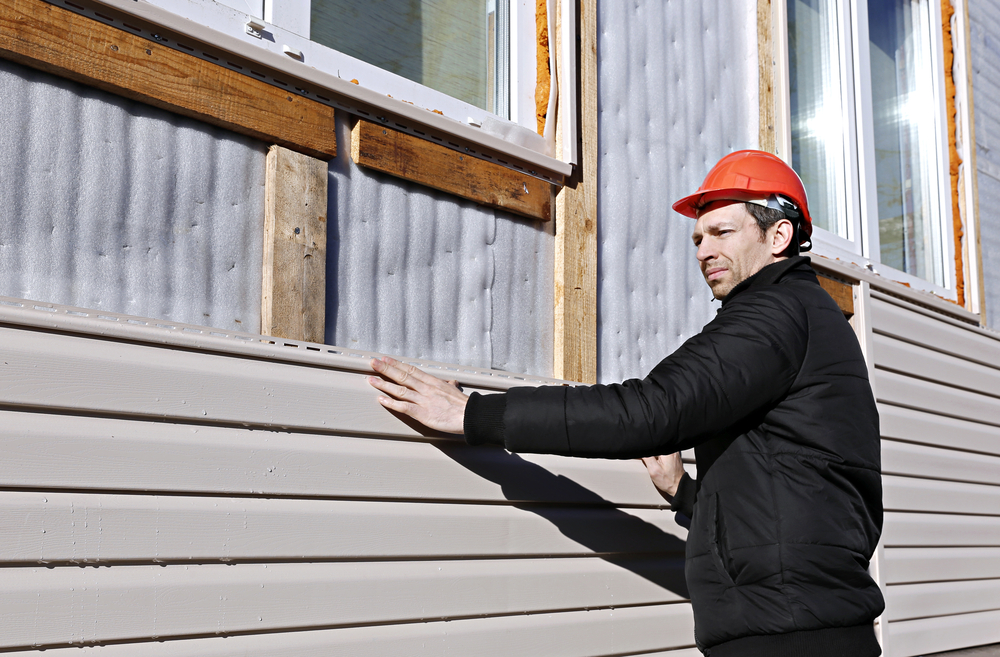
Replacement Siding is one of the most popular and effective ways to give your home a facelift. Replacement siding can either be installed over existing Siding or can completely replace an old, worn-out facade. Whether you are looking to update the color of your home, change a siding material, or need repairs from storm damage — replacement Siding is the answer.
Replacement Siding can be made out of many different materials and has become increasingly popular in recent years because it allows homeowners to transform their homes into modern havens that stand apart from others on the street. This blog post will go through the 11 most frequently asked questions about replacement siding and provide answers for homeowners looking to install new siding on their homes.
Q: What are some of the materials used in Replacement Siding?
A: Several types of material can be used as Replacement Siding, including wood, vinyl, composite wood, metal, and fiber cement. There are pros and cons to each type of material that homeowners will need to consider for their own needs, including durability, cost-effectiveness, and affordability.
Q: What is the difference between new siding installation vs. replacement Siding?
A: New siding installation involves completely replacing a home’s existing Siding with new material. New Siding installation is a more expensive option than replacement siding because it often requires additional labor and the removal of old materials, and the installation of new ones. Replacement Siding can be installed over existing Siding, or it can completely replace an old, worn-out facade altogether — depending on the homeowner’s needs.
Q: How long does it take to install Replacement Siding?
A: The amount of time it takes for a contractor will vary depending on how much Siding is being replaced, if any additional work needs to be done and whether or not there are complications during installation.
Q: How much does it cost for a contractor to install new Siding?
A: The average price range for replacement siding is between $5000 and $15000 — depending on the size, location, and material that will be used. However, large homes with more extensive renovations may end up costing more than this average.
Q: What are the benefits of vinyl siding?
A: Vinyl is one of the most popular materials used for Replacement Siding because it has low cost, comes in many colors and styles, and can last up to 40 years with proper maintenance. Homeowners will also appreciate that they can install their vinyl siding if they choose to do so.
Q: What are the benefits of fiber cement siding?
A: Fiber cement is a heavy-duty material that is one of the most durable options available for Replacement Siding and will last indefinitely with proper maintenance, repair, and replacement when necessary. However, homeowners should be aware that this material can be challenging and often more expensive than other options.
Q: What are the benefits of wood siding?
A: Wood is one of the most aesthetically pleasing options for Replacement Siding because it comes in a wide variety of colors and styles. Homeowners will also appreciate that wood can be stained or painted to suit their preferences. Wood siding requires regular maintenance, including cleaning, caulking, and sealing — so homeowners should prepare themselves for this added responsibility if they choose wood as their siding material.
Q: What are the benefits of metal siding?
A: Metal has become a popular option for Replacement Siding because it is durable and can last indefinitely with proper maintenance. Additionally, homeowners will appreciate the wide range of colors and styles available to choose from when selecting their new Siding.
Q: What are the benefits of composite wood siding?
A: Composite wood has become increasingly popular in recent years because it is environmentally friendly and can mimic the appearance of natural wood but without some drawbacks. This type of material has low maintenance requirements as well as good durability when properly maintained. Homeowners will also appreciate that composite wood can come in a wide variety of colors and styles.
Q: What is house wrap?
A: Housewrap is a protective barrier covering the house’s exterior before installing any other siding material. This fabric helps to protect homes from outside elements such as rain and moisture.
Q: What is sheathing?
A: Sheathing covers the house’s exterior before installing siding materials by tacking up plywood or OSB boards over the wall studs.
Q: What does it mean when companies advertise that their Siding is 100% recyclable?
A: When companies advertise that their products are “100% recyclable,” it means they can be dissolved and chemically processed to become raw materials for new product manufacturing. This does not mean the company will recycle your old Replacement Siding since this process requires a lot of money and resources.
Q: What are some possible siding installation issues?
A: Siding installations can encounter various problems depending on the type and construction of your home. These include but are not limited to difficulty in replacing old Siding, warped or bowed boards, rotting walls, and even water damage.
Q: Is it possible to do the replacement myself?
A: In some cases, you can install new siding on your house. But this will depend on the type of Siding and the construction of your home. You should consult a professional to determine if you can do it yourself or leave it for an expert.
Q: What are some precautions I should take during installation?
A: Safety is a top priority when your house needs new Siding. It would be best if you were careful that you don’t hurt yourself. Wear goggles, gloves, and a mask, so you don’t get hurt from the cutting or chemicals.
Q: What are some industry certifications that I should look for?
A: If you are looking for a contractor to handle your Replacement Siding installation, make sure they have the proper credentials. Industry certifications can vary depending on the type of Siding and skill level needed.
Q: How do you dispose of old Siding when it is no longer needed?
A: Your local waste management company will know how best to handle your old Siding once you are done with it. Some options include recycling or having it disposed of in an eco-friendly way, like using a landfill specifically designed for these materials instead of throwing them away at regular landfills where they may contaminate soil and groundwater supplies.
Q: How do I find a contractor to install my new Siding?
A: If you are not comfortable installing Replacement Siding yourself, hiring a professional is the best option. Shop around and compare different contractors’ prices as well as their experience in the industry. Check to ensure they have the appropriate certifications for their work and are insured during any accidents during installation.
Q: What does it mean when a company says its Siding is “maintenance free”?
A: If Replacement Siding has been appropriately installed, homeowners should not need anything special to maintain or clean it. Some companies may require you to use certain cleaning products only on specific types of materials, so be sure to ask before starting your project.

Conclusion paragraph: Siding is a significant investment, making it essential to ensure that you get the best deal. To help with this decision-making process, we’ve compiled some of our most frequently asked questions about replacement siding and what they can do for your home. We hope these answers cover all your concerns so that you can make an educated purchase when choosing new Siding! If not, let us know – there may even be one more blog post in store for those unanswered questions. In the meantime, enjoy reading through these FAQs, and feel free to ask any others you may have below or on social media!



